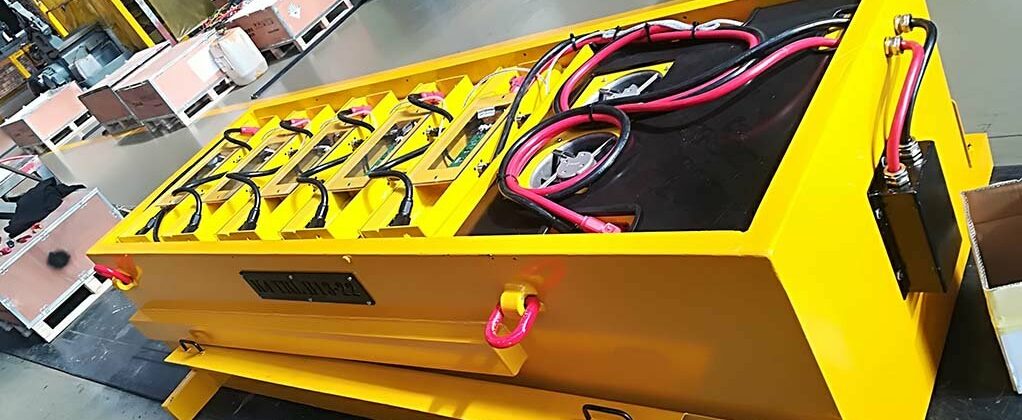by Flextra Engineered Products 0 comment
South Africa urged to consider its contribution to the global battery value chain
Batteries are fast becoming the core of modern energy systems and more sustainable economies, underpinning the implementation of smart grids and minigrids, while fostering the rollout of renewable energy and e-mobility, and yet, South Africa’s involvement in the battery value chain remains limited.
Trade and Industrial Policy Strategies chief economist Gaylor Montmasson-Clair questions whether South Africa will be an importer of batteries only, or if it will manage to become a part of the value chain.
He explains that lithium-ion battery (LIB) cells consist largely of four components: a cathode that determines capacity and average voltage of a battery; the anode that comprises the negative electrode; an electrolyte solution; and a separator, which determines the safety of a battery, preventing short circuiting and overheating.
In turn, there are six types of LIBs – lithium/nickel/cobalt/aluminium, lithium/manganese oxide, lithium iron phosphate and lithium/nickel/manganese/cobalt.
Montmasson-Clair says South African stakeholders need to understand where niche markets lie in this regard. China currently dominates LIB production, while there are also some production facilities in the US and European markets.
The market has, therefore, already been captured by a few key players, including Panasonic, CATL and LG Chem; however, South Africa can still get involved in the battery value chain, he says.
He believes South Africa has the relevant skills and expertise in mineral beneficiation, with entities such as minerals specialist Mintek and with battery-related manufacturing companies, as well as an endowment of some of the minerals used in LIBS, such as manganese.
Montmasson-Clair mentions that neighbouring countries such as Zimbabwe have lithium, which South Africa can leverage. If South Africa gets serious about cell manufacturing, it can access copper from the Democratic Republic of Congo (DRC) or Zambia, cobalt from the DRC and Madagascar, graphite from Mozambique, Tanzania or Madagascar, nickel from Zimbabwe and Botswana and phosphate rock from Morocco, Algeria or Egypt.
As it stands, South Africa only beneficiates manganese and aluminium to battery grade, while nickel and lithium beneficiation is in the pipeline.
Montmasson-Clair points out that Manganese Metal Company, in Nelspruit, is the only company in the world, outside of China, that refines manganese to battery grade. The company produces about 28 000 t/y of electrolytic manganese metal for use in high-purity manganese sulphate, and in cathode.
While Montmasson-Clair is confident that South Africa has the industrial capacity and know-how to manufacture LIB cells, but says there is but one pilot plant for this in the Western Cape.
South African company Metair produces battery cells, but does so in Turkey and Romania, owing to it being more economically viable than producing these in South Africa.
Some companies such as AutoX and MegaMillion aim to develop cell manufacturing capability in the country, but it remains to be seen if these plans will proceed.
Moreover, Montmasson-Clair explains that battery manufacturing based on imported cells, since cell manufacturing is more costly to start up, is a more vibrant prospect in the country.
He confirms that numerous firms have developed intellectual property and expertise in the manufacturing of specific component parts of batteries, such as casing, and in the assembly of battery packs.
In some cases, companies have used this expertise to develop additional offerings, such as specialised vehicles. “Perhaps these companies can tap into cell manufacturing,” he suggests.
Looking at battery recycling, Montmasson-Clair says South Africa has companies involved in marketing second-life batteries on the local market and that only a few facilities globally are in a position to effectively recycle LIBs.
Montmasson-Clair explains that South Africa may not be able to compete with leading firms in terms of cell manufacturing and may also experience high barriers to entry for battery packs in the automotive and large-scale energy storage industry, but it can certainly focus more on its mineral beneficiation capabilities, a select few niche markets and lend skills and expertise to the world.
He emphasises that South African industries need to identify where they can be competitive and focus on their own and the country’s evident strengths and not unsubstantiated aspirations.
DEMAND
Market intelligence firm Project Blue analyst Dr Nils Backeberg says the energy transition will be raw materials-intensive, creating unprecedented demand for critical materials that are fundamental for renewable energy sources and other sectors, including aerospace, automotive and steel.
He adds that changes in the technological landscape determine raw materials demand and, at the moment, lithium is the material of choice for electric vehicle (EV) batteries.
Lithium-ion demand is set to reach nearly 7 TWh by 2050, as EV sales are driven by China, Europe and North America, and as more sectors opt for LIBs for energy storage purposes.
Although South Africa does not have any meaningful lithium deposits, Backeberg believes it can serve as a hub for Southern African resources.
He stresses that there are more critical materials that South Africa could pursue development and beneficiation of, to still be part of the energy transition value chain globally, including rare earths, vanadium and manganese.
Backeberg says that while South African geology is not prime property for battery materials, its neighbouring countries are and it should consider facilitating supply as its most significant opportunity.
Backeberg and Montmasson-Clair spoke during the Battery Materials conference hosted by the Southern African Institute of Mining and Metallurgy on August 24 and 25.

